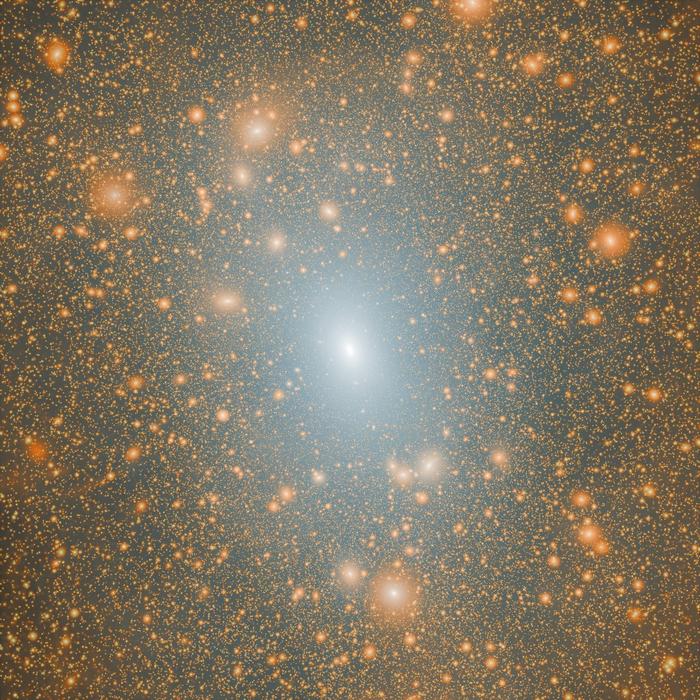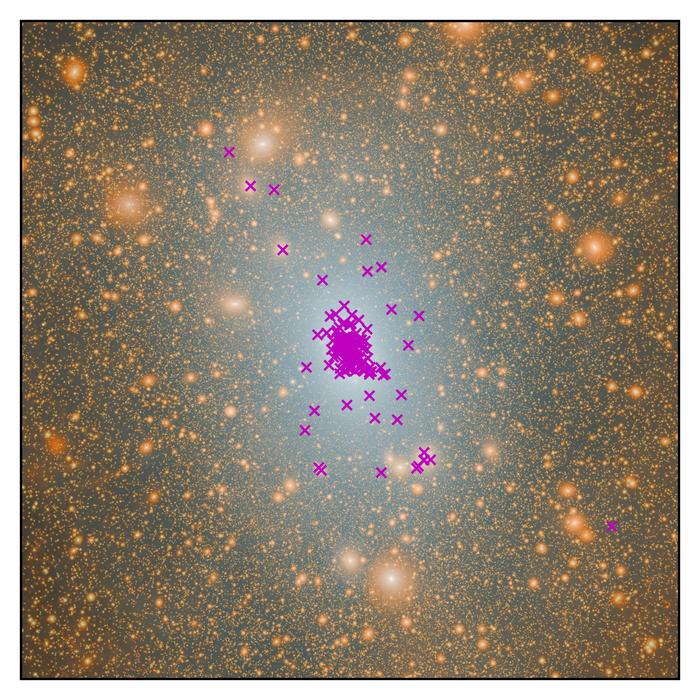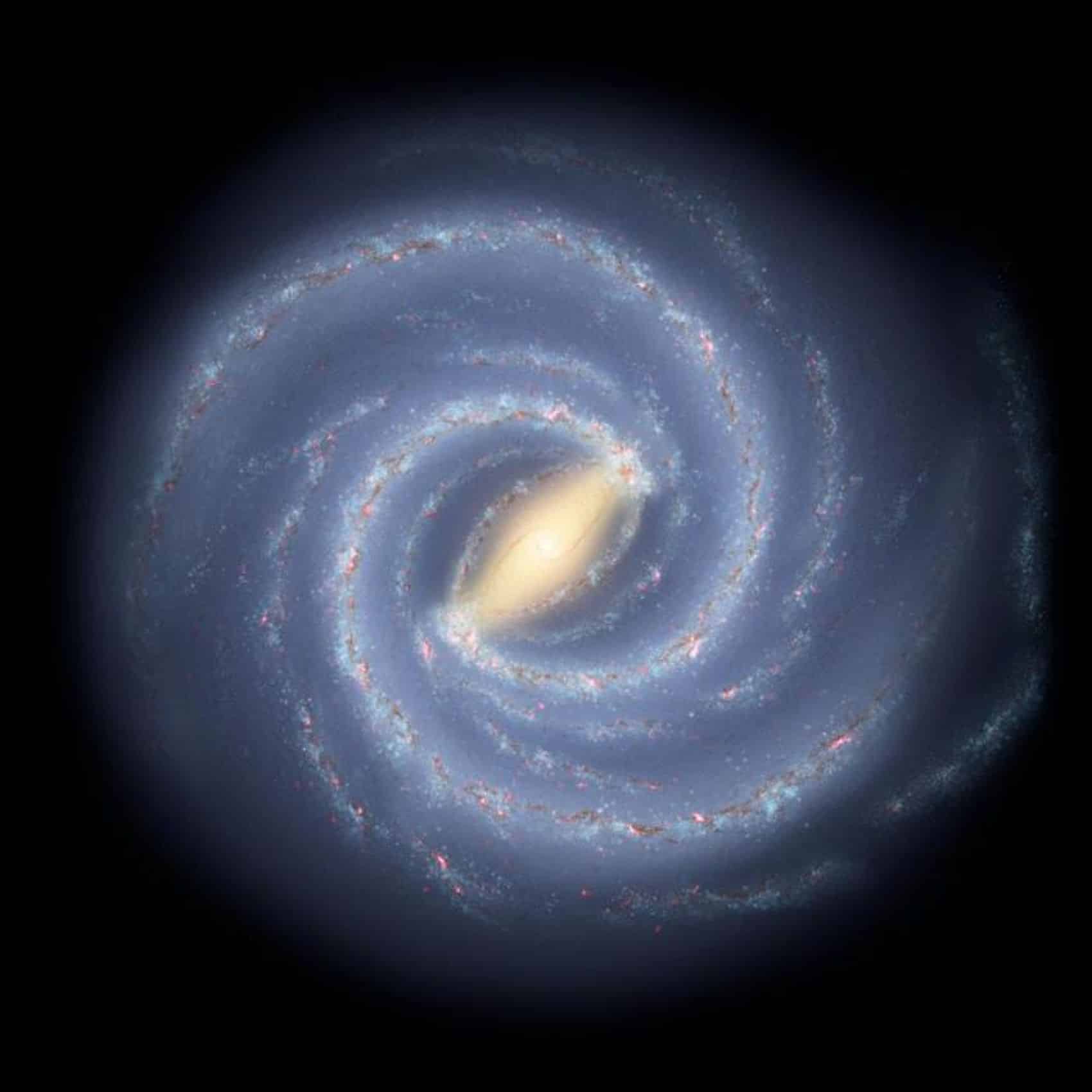Scientists at Durham University used powerful supercomputers and fresh math tricks to peer into the cosmic unknown. What did they find? Possibly up to 100 tiny, hidden galaxies, nicknamed “orphans”, lurking near our Milky Way, quietly orbiting like celestial wallflowers.
Spotting these galaxies could be a big deal. Why? Because it would strengthen the Lambda Cold Dark Matter (ΛCDM) theory, our current best guess at how galaxies grow and the universe ticks.
According to ΛCDM:
- Just 5% of the universe is made of familiar stuff like atoms.
- About 25% is mysterious cold dark matter.
- And a whopping 70%? That’s dark energy, the silent architect shaping space itself.
Nearby dwarf galaxy will hit Milky Way, wake up the black hole
Imagine the universe as a giant dance floor where galaxies are the dancers, and dark matter halos are the invisible partners guiding their moves.
Most galaxies out there are tiny dwarf galaxies. They often twirl around heavier ones, like our Milky Way, as satellite dancers.

Credit: The Aquarius simulation, the Virgo Consortium/Dr Mark Lovell.
But here’s the twist: Scientists noticed a puzzling absence of these little partners in both simulations and telescope sightings. According to the leading theory, Lambda Cold Dark Matter (ΛCDM), way more of them should exist.
New research reveals that many of these missing satellites have been so tugged and stretched by the gravity of our Milky Way that they lost their original dark matter halos. Now barely visible, these faint survivors are dubbed “orphan galaxies”, ghostly dancers still floating around, unnoticed.
Milky Way may have 100 faint satellite galaxies
If telescopes finally spot them, it would not only fill a cosmic mystery gap, but also give a big thumbs-up to ΛCDM as the theory that explains how our vast universe organizes itself.
Using a powerful new technique, scientists at Durham University hunted down some of the Milky Way’s most elusive neighbors: faint, forgotten “orphan galaxies.” Their research shows that many more satellite galaxies should be out there, hidden in plain sight.


Credit
The Aquarius simulation, the Virgo Consortium/Dr Mark Lovell
With next-gen instruments like the Rubin Observatory’s LSST camera, now peering into the universe, astronomers may finally spot these ghostly galaxies for the first time.
Dr. Isabel Santos-Santos explains that while we know of about 60 satellite galaxies around the Milky Way, there could be dozens more quietly orbiting nearby, just too faint to see until now.
Unraveling the mystery of the Milky Way’s satellite galaxies
If these predictions hold, it’s a big win for the Lambda Cold Dark Matter (ΛCDM) theory, which helps explain how the cosmos builds galaxies and structures.
Observational astronomers are now comparing real telescope data to Durham’s predictions, and if these galaxies do pop up, it could unravel deeper secrets about how the universe came to look the way it does today.
The Lambda Cold Dark Matter (ΛCDM) model is like the universe’s rulebook, explaining how galaxies grow, spread, and evolve on a massive scale. It’s passed a lot of tests and forms the backbone of modern cosmology.
But recently, tiny troublemakers called dwarf galaxies have thrown some shade on this cosmic blueprint.
Is the Milky Way galaxy special?
Durham scientists say even our best simulations, those that factor in stars, gas, and dark matter, can’t zoom in on these faint galaxies near the Milky Way. They’re just too dim and too detailed, slipping through the cracks like intergalactic ninjas.
Plus, those simulations struggle to track the long, slow dance of dwarf galaxies and their mini dark matter halos as they orbit the Milky Way over billions of years. It’s like trying to follow fireflies in fog using pixelated binoculars.
In galaxy simulations, sometimes the dark matter “shells” that cradle galaxies, called halos, get accidentally erased by technical glitches. This leaves some galaxies “orphaned,” as if they’ve lost their protective cosmic coats.
But Durham scientists didn’t settle for flawed models. They teamed up supercomputer simulations with sharp mathematical insights to fix the glitch and spot these hidden galactic loners.
Their tools:
Aquarius Simulation: Think of it as the most detailed zoom-in ever on the Milky Way’s invisible skeleton.
GALFORM: A powerful galaxy-building blueprint that tracks how galaxies take shape, evolve, and shine (or barely glow).
The origin of ultra-diffuse galaxies explained
What did they discover? Many dark matter halos, mini cosmic cocoons, have been circling the Milky Way for billions of years. Over time, the intense gravity stripped them of their material, turning them into tiny, dim satellites that are tough to spot but still out there.
Durham researchers believe the Milky Way has been hiding a crowd of 80 to 100 extra satellite galaxies, lurking quietly in its neighborhood, too faint to notice before.
Around 30 tiny new candidates have already popped up, sparking debate: are they true dwarf galaxies, wrapped in dark matter halos? Or just tightly packed groups of stars called globular clusters?
These mysterious objects are incredibly faint, but Durham’s team thinks they might belong to the missing galaxy family they predicted—hidden outliers waiting to be confirmed.
Co-researcher Professor Carlos Frenk, of the Institute for Computational Cosmology, Department of Physics, Durham University, said: “If the population of very faint satellites that we are predicting is discovered with new data, it would be a remarkable success of the LCDM theory of galaxy formation.“
“It would also provide a clear illustration of the power of physics and mathematics. Using the laws of physics, solved using a large supercomputer and mathematical modelling, we can make precise predictions that astronomers, equipped with new, powerful telescopes, can test. It doesn’t get much better than this.”
